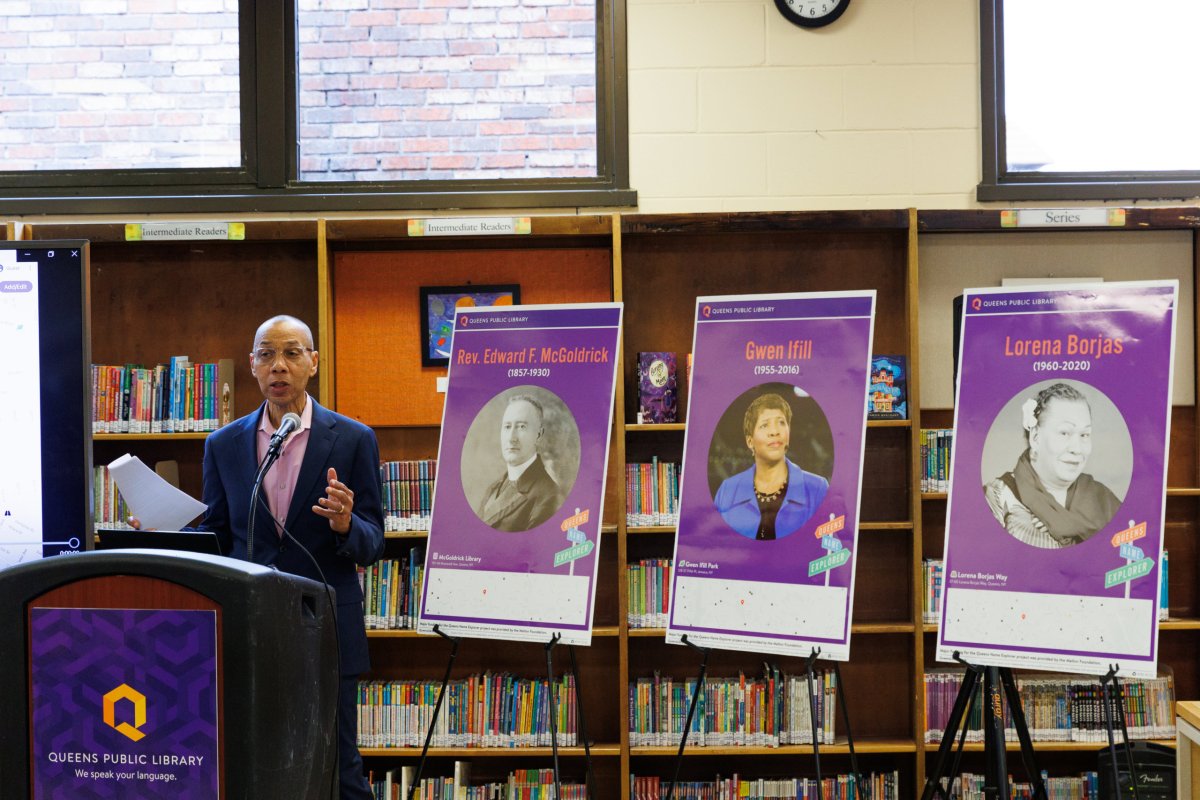Queens Public Library conducted walking tours on Saturday, Oct. 22, in Ridgewood, Jamaica, Forest Hills and Hunters Point in Long Island City as part of its new Queens Name Explorer project.
The new initiative was launched at the McGoldrick branch in Flushing by Queens Public Library president and CEO Dennis Walcott, who unveiled the project’s website that encompasses places named after well-known Queens residents, including Gwen Ifill Park in Jamaica, Lorena Borjas Way in Jackson Heights and Rev. Edward McGoldrick, an Irish immigrant and priest who served as the first pastor of St. Andrew Avellino Church in Upper Flushing.
McGoldrick sought to promote education in the area and advocated for the opening of the library that now bears his name.
“Since its inception, Queens Public Library has amassed and maintained an enormous collection of maps, newspapers, photos and other reference materials about the history of Queens County, including its history before becoming part of New York City in 1898,” Walcott said. “This fantastic, truly unique project will deepen and enhance our existing collection and cement our role as the leading repository dedicated entirely to Queens’ rich history in New York City.”

QPL’s Queens Memory Project director Natalie Milbrodt will lead the initiative, which will create an interactive map documenting the biographical details of the people whose names grace the borough’s streets, schools, buildings, parks, monuments and other public places. More than 1,250 places are now available for viewing on the project’s website.
“Our team has combined archival research and data mining techniques to assemble a treasure trove of historical information about these individuals, sourced from our own archives, NYC Open Data and other sources, but it’s far from complete,” Milbrodt said. “We’re asking anyone with information about the history behind name places in Queens — whether it’s a published photo or article, or a personal remembrance, photo or video — to visit the Queens Name Explorer website to share their additions and edits to the place name entries on the map.”
She said many of the subjects are not nationally known so there wouldn’t be another way to look them up in the next hundred years.
“Many individuals represented with honorary namings are well known to a small local contingent, but not well known outside their immediate communities,” Milbrodt said. “We aim to raise awareness of these beloved local figures who have made lasting contributions to our city.”
Queens Historical Society Executive Director Jason Antos said the project providing a history behind the names is “really cool.”
“This effort will do a magnificent job to strengthen the amount of available historical information relating to Queens,” Santos said. “We’re thrilled to be working with Queens Public Library and the Queens Name Explorer team to bring this project to fruition so our residents can learn about all the people behind the names we see on street signs and buildings every day.”
The project will also analyze the demographics of Queens neighborhoods to identify gaps in representation between named places and the people of these communities.
“It is the history, it is our lifeblood, it is our legacy of who we are as a borough and who we represent in the city of New York as well and that’s what this project is about: to make sure we capture that information, we put the information into our records and make sure that information is available to all the people to see,” Walcott said. “We don’t want a name that’s been put on a building or put on a park, on a street or any other type of institution to just go by the wayside. We want to capture that history. We want to make sure that’s a part of who we are and our children will know and our grandchildren will know and people will know what those individuals meant.”
Additional reporting by Paul Frangipane.




































